Tacho-Data Analysis: No. 1 Factor in Drive & Rest Time Compliance
Tachograph analysis is a crucial tool for ensuring compliance with regulations and promoting safety in the transportation industry. By monitoring and analyzing tachograph data, companies can ensure that their drivers are following proper driving regulations and identify any potentially dangerous or non-compliant behavior.
Tachographs are devices that record a vehicle’s speed and distance traveled, as well as the length of time that the engine is running. They are used to monitor commercial vehicles and ensure that drivers comply with speed limits, drive and rest time, working time, and other regulations.
There are two types of tachographs: analog and digital.
Analog tachographs have been in use since the early days of motoring, but they are being phased out in favor of digital tachographs. Digital/Smart tachographs are more accurate and easier to download and analyze than analog tachographs.
Tachograph data is typically stored in two different places:
- Tachograph:
Tachograph devices have an internal memory that stores data on the vehicle’s speed and distance, as well as the time that the vehicle is in motion. This data is stored in the tachograph’s internal memory and can be accessed through the device’s display. - External memory (Smart card):
Tachograph devices also have a built-in smart card reader that allows data to be stored on an external memory device, usually a smart card. This is the most common and convenient way for data storage for long period, as a smart card allows large amounts of data to be stored, and can be easily transferred to a computer for analysis.
When the data is downloaded from the tachograph, it is typically transferred to a computer for analysis. The data is then analyzed using specialized software, and any compliance issues are identified.
After the analysis, the data is usually stored in a central database or a cloud-based storage solution for future reference.
Tachographs help to ensure compliance with safety regulations, which helps to prevent accidents and save lives.

Tachograph Data Collection: What are the options?
There are several ways to collect tachograph data:
Remote data download:
Some tachograph manufacturers have developed solutions to allow the remote downloading of data without the need to be physically present. This can include installing equipment in the vehicle that allows for downloading of data via the cellular network or satellite connection or using data transfer software that allows for remote downloading of the data through the internet.
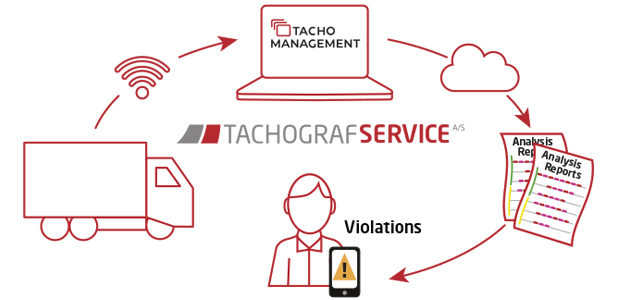
Data extraction:
Some companies use external devices/keys/stations or software that can extract the data directly from the tachograph’s memory via a cable connection. These devices can be connected to the vehicle diagnostic socket, and they allow the extraction of data in an automated way.- Wireless downloading:
Some tachograph devices come equipped with wireless capabilities, such as Bluetooth or WiFi, which allows data to be downloaded to a computer without having to physically remove the smart card from the tachograph. Downloading via a Smart Card reader:
The smart card, which is inserted into the tachograph’s card reader, stores the data collected by the tachograph. This data can then be downloaded to a computer using a smart card reader.
It’s important to keep in mind that all the data collected needs to be stored in a secure and tamper-proof way, as the company is responsible for the integrity of the data and they can be subject to audits and verifications by authorities.
Tachograph Data Regulations and Law
The main EU regulations and directives in place regarding drive and rest times, working time, and tachographs for commercial vehicle drivers are:
Regulation (EC) No 561/2006 on the harmonization of certain social legislation relating to road transport: This regulation sets out the rules for driving and rest times, as well as the use of tachographs. It lays down the maximum daily and weekly driving times, as well as the minimum rest periods that drivers must take.
Regulation (EU) 165/2014 on tachographs in road transport: This regulation lays down the technical specifications for tachographs and establishes a framework for the inspection, calibration, and use of tachographs.
Regulation (EC) 2019/937/EU sets out rules on the organization of working time for certain categories of workers. The regulation applies to all workers within the EU, including those in the transport sector, and provides for minimum rest periods, maximum weekly working hours, and annual leave entitlements. The regulation also includes provisions for night work, rest breaks and rest periods, and the rights of workers to request more flexible working arrangements.
Regulation (EU) No 595/2009 lays down the requirements for the approval of devices for the control of the speed and distance of vehicles for the purposes of the recording of driving and rest times.
Regulation (EU) 2020/1055 known as the “Minimum Requirements on maximum daily and weekly driving times, minimum breaks and daily and weekly rest periods and the use of driver’s time-recording equipment (recast) ” and it lays down rules on the maximum driving time, minimum rest periods, and the use of driver’s time-recording equipment for drivers of certain road vehicles engaged in the international transport of goods and passengers.
The EU Mobility Package is a set of legislative proposals put forward by the European Commission aimed at improving the rights and working conditions of drivers, increasing road safety, and promoting fair competition in the road transport sector. The package includes a number of directives and changes which you can read more about here.
Tachograph regulations and laws are constantly evolving, so it is important for commercial vehicle operators to keep up-to-date with the latest developments. Failure to do so could result in serious breaches of the law that could lead to costly fines or even prosecution.
Importance of Tachograph Data Analysis for Compliance and Safety
Tachograph analysis is a vital tool for compliance with drive and rest time regulations and maintaining safety standards. The tachograph data analysis can help identify a variety of issues.
What can tachograph data analysis identify?
- Tachograph data analysis can help identify drivers who are not following the rules and ensure that they are brought into compliance.
- Tachograph data analysis is vital for compliance as it is the easiest way for vehicle operators to adhere to regulations related to driving and rest times and the working time directive.
- Problematic driving patterns and behaviors can be identified that could put drivers at risk of an accident or injury, e.g. drivers who chronically do not take enough rest are more likely to suffer from fatigue.


- Trends in the driver’s behavior, such as how much they drive, rest, and what type of violations they make, can be used to proactively address any safety concerns.
- The analysis can show instances of falsifying the records, problems with the tachograph equipment or download box as well as any problems with the data, such as duplicate files, missing data, empty files.
- It can also help companies avoid fines and penalties, improve their reputation and avoid potential liabilities related to accidents and breaches of regulations.
- The data can be used for salary calculations, incentivize the drivers and fleet managers can identify areas where improvements could be made to save time and money.
In combination with other tools such as fleet management and vehicle telematics, the data can be used for route optimization or fuel efficiency initiatives.
Compliance Obligations for Fleet Owners for Tachograph Data
The tachograph data compliance obligations for fleet owners in the European Union (EU) include a number of requirements to ensure that the tachographs and are properly used, maintained, and the data is properly recorded, stored, and reported.
The main obligations regarding tachographs and tachograph data compliance are:
Proper installation and maintenance of tachographs:
Fleet owners must ensure that tachographs are properly installed in their vehicles and that they are maintained and calibrated in accordance with the manufacturer’s instructions and EU regulations.
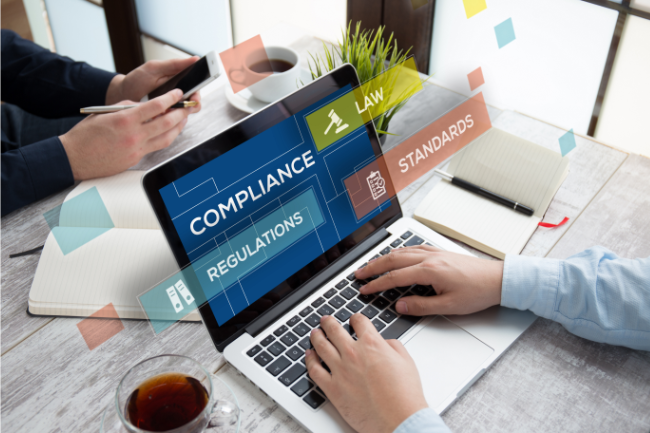
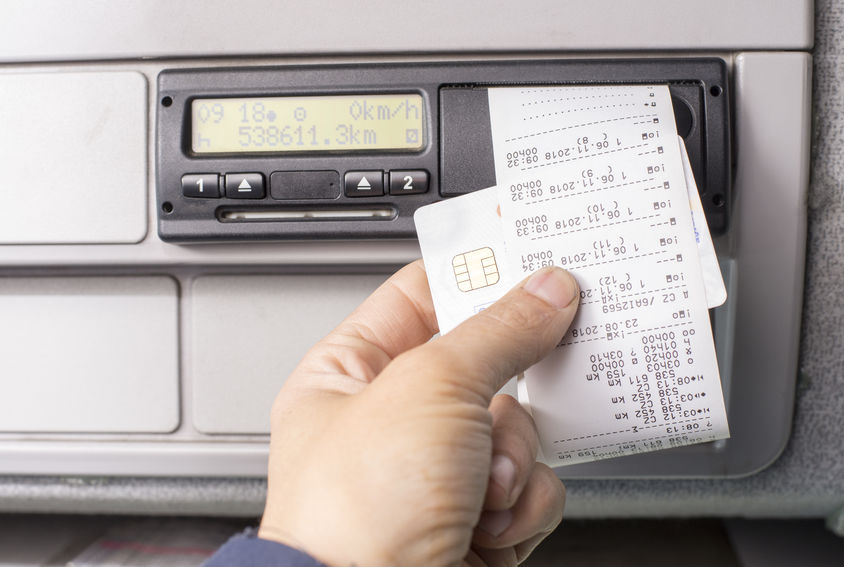
Proper use of tachographs:
Fleet owners must ensure that the tachographs are used in accordance with EU regulations, including compliance with regulations related to drive and rest times and Working Time directive.Recording and storage of tachograph data:
Fleet owners must ensure that all data recorded by the tachograph is properly stored and that the data is kept for at least 12 months and be made available upon request to authorized bodies. If the tachograph data is used for remuneration, it needs to be kept for longer period of time (check your local rules).
Reporting of tachograph data:
Fleet owners must submit reports of tachograph data to the authorities as required by EU regulations. This usually includes submitting periodic reports of drive and rest times, working time, as well as providing other data upon request.Driver training:
Fleet owners must ensure that their drivers are properly trained on the proper use of tachographs and on compliance with EU regulations.
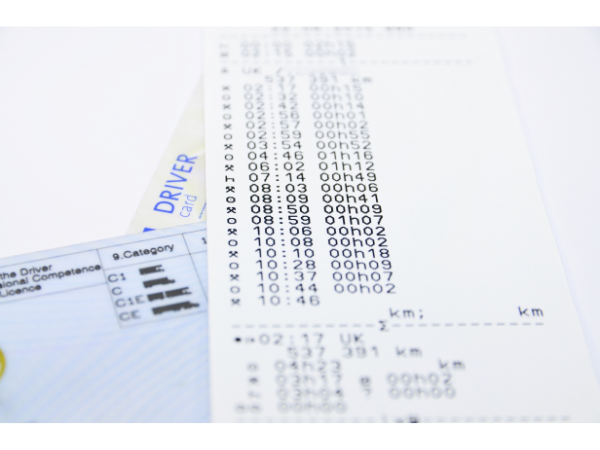
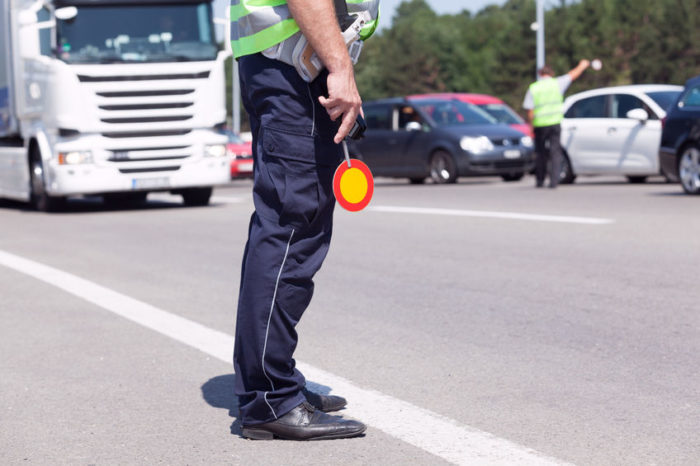
Monitoring compliance of all parties:
Fleet owners must ensure that all parties in their organization, such as dispatchers, managers, etc., comply with the regulations, and also take measures to prevent any non-compliance from happening.Inspections:
Fleet owners must be prepared for inspections by authorized bodies, who have the right to check and verify compliance with the regulations.
Overall, fleet owners have a significant responsibility in ensuring compliance with the EU tachograph regulations, including ensuring that the tachographs are properly used, maintained, and the data is properly recorded, stored, reported, and available for inspections.
Penalties for Non-Compliance with the Tachograph Data Regulations
Non-compliance with the tachograph regulations in the European Union (EU) can result in penalties for both the driver and the operator of the vehicle. Penalties for non-compliance can vary depending on the specific regulations that have been violated and the severity of the violation. The EU distinguishes four infringement type of categories:
- Minor Infringement (MI)
A minor infringement can result in a warning and a fine. Typically, the violation is of a minor character, e.g. drive time has been exceeded with less than 1h.
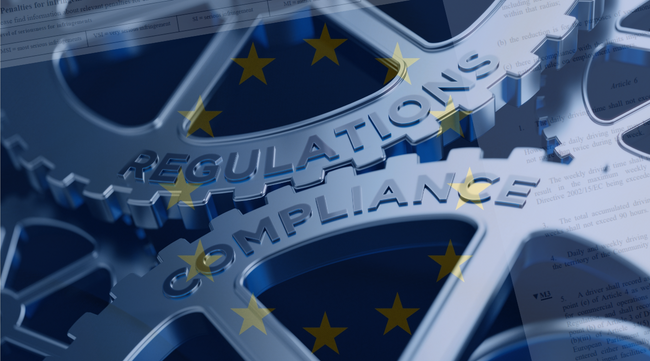
- Serious Infringement (SI)
A serious infringement results in a fine, rarely a warning and a fine. Typically, the violation is of a serious character and the exceeded time is longer than a minor infringement one. - Very Serious Infringement (VSI)
A very serious infringement results in a fine, some cases administrative penalties. Typically, such violations imply mising data, malfunctioning equipment and high degree of exceeded time. - Most Serious Infringement (MSI)
This type of infringement results in a fine, administrative penalties and in some instances can result in criminal charges.
Drivers can face penalties for non-compliance with tachograph regulations, such as fines, driving bans, or even criminal charges in some serious cases. Repeated violations can result in increased penalties.
Operators can also face penalties for non-compliance, such as fines or penalties for failing to keep adequate records or for falsifying records. Operators can also face penalties for allowing drivers to exceed the legal driving time or failing to properly maintain and calibrate tachographs.
Financial penalties can vary widely depending on the specific violation and the country where the violation occurs. Some violations can result in fines of several thousand euros, while more serious violations can result in fines of tens of thousands of euros.
They can also be imposed on operators, such as suspension of the license to operate, prohibition of the use of the vehicle, fines, etc.
They can also be imposed on operators, such as suspension of the license to operate, prohibition of the use of the vehicle, fines, etc.
It is important to mention that penalties and fines will vary from country to country and even from region to region, and it’s important to keep aware of the specific regulations and penalties in force in the country or countries where the company operates.
Identifying and Addressing Compliance Issues through Tachograph Data Analysis
To analyze tachograph data, companies typically use specialized software that can process and interpret the data recorded by the device. The software can be used to generate reports that highlight any compliance issues.
The most common violations found within tachograph data include:
Exceeding daily driving time limits:
This occurs when a driver exceeds the maximum daily driving time of 9 hours or 11 hours, depending on the country.Failing to take required rest breaks:
Drivers are required to take a minimum amount of daily and weekly rest periods, and tachograph data can be used to identify instances where drivers have failed to take these breaks.

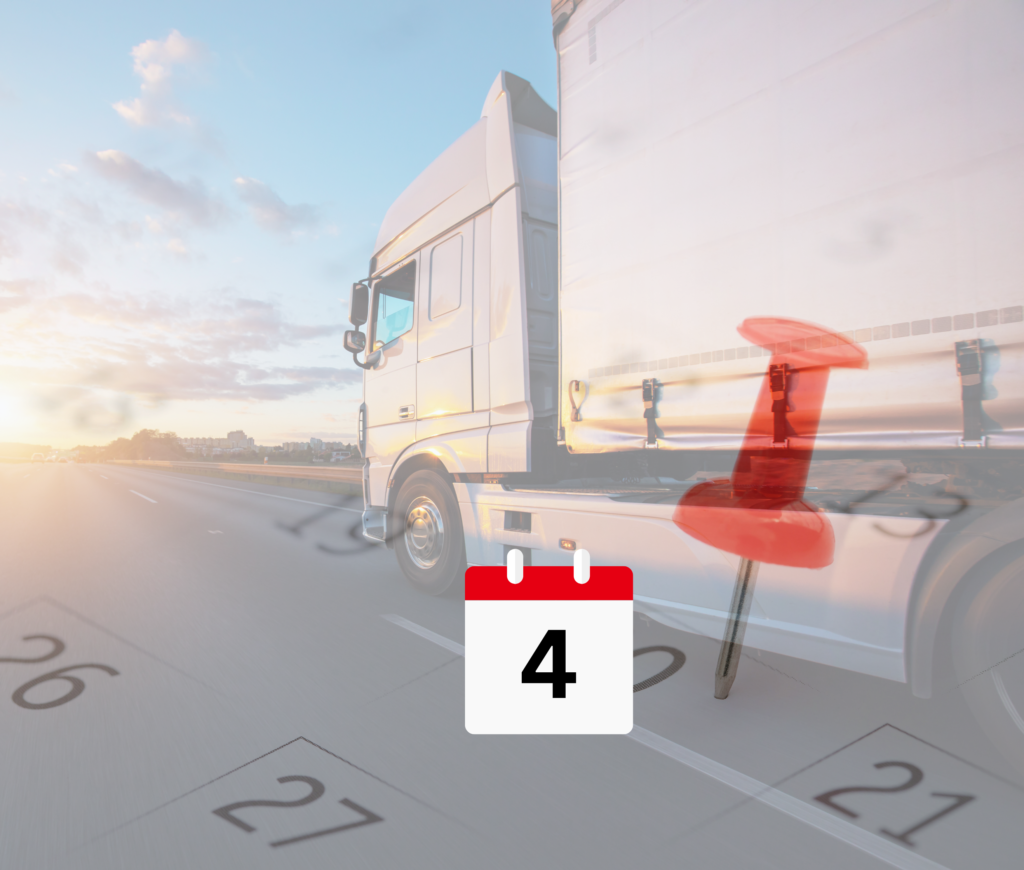
Falsifying tachograph records:
Some drivers may attempt to falsify tachograph records by tampering with the device or manually recording incorrect information.Failing to accurately record all driving time:
Some drivers may forget to activate the tachograph when starting to drive or may forget to stop the recording when taking a break, resulting in a recording of the total driving time.Not respecting the legal limitation of working time
Not respecting the legal limit of driving time
These violations can have serious consequences, including fines and penalties for the company, as well as potentially putting the safety of drivers and other road users at risk.
Risk and Consequences of Not Analyzing Tachograph Data
If a company does not analyze tachograph data, it may be at risk of several consequences, including:
Non-compliance with regulations:
Without analyzing tachograph data, a company may not be aware of instances where drivers are exceeding daily driving time limits or failing to take required rest breaks. This can result in the company being in violation of regulations and facing fines and penalties. Repeated violations result in higher penalties.Increased risk of accidents:
Fatigued drivers, who have exceeded the maximum allowed driving time are at an increased risk of being involved in an accident. By not analyzing tachograph data, a company may not be aware of drivers who are at a higher risk of causing an accident.


Reputational damage:
If a company is found to be in violation of regulations, this can result in negative publicity and damage to the company’s reputation. Some countries apply loss of reputation as part of their administration penalties when certain infringements are present.Increased operational cost:
Fines and penalties for non-compliance can be expensive. Additionally, fatigued drivers are less productive, which can lead to increased operational costs. This can be optimized with the help of tachograph data analysis
Legal liabilities:
A company can also face legal liabilities if any accidents happen due to non-compliance with regulations and fatigued drivers.
It’s important for companies to regularly monitor and analyze tachograph data in order to ensure compliance with regulations and to mitigate the risk of accidents and other negative consequences.
Best Practices: Tachograph Data Analysis Improving Compliance and Safety
There are several best practices for using tachograph data analysis to improve compliance and safety:
Regular analysis of tachograph data:
Fleet operators should regularly analyze tachograph data to ensure compliance with regulations related to driver hours and rest times, and to identify patterns of non-compliance. This can be done by comparing the data recorded by the tachograph to the regulations and by identifying any discrepancies or inconsistencies.Identifying high-risk drivers:
Tachograph data analysis can be used to identify high-risk drivers who are more likely to violate regulations or be involved in accidents. By monitoring these drivers more closely, fleet operators can take steps to improve their compliance and safety performance.

Using software tools:
There are software tools available that can help fleet operators analyze tachograph data more efficiently and effectively. These tools can automate the process of data analysis, flag any potential compliance issues, and provide alerts when a driver is approaching the maximum working time or rest time limits.Driver training:
Regular training on the proper use of the tachograph, the regulations, and the importance of compliance with the regulations can be an effective way of improving compliance and safety.Monitoring compliance of all parties:
Compliance is not only the responsibility of the driver, it should be also monitored by all parties, such as dispatchers, managers, etc, that can have an impact on the compliance of the drivers.Regularly checking and maintaining tachographs:
The tachograph devices should be regularly checked and maintained to ensure that they are functioning properly and recording accurate data.
Overall, by using tachograph data analysis to improve compliance and safety, fleet operators can help to reduce the risk of accidents and violations, improve their reputation and avoid potential liabilities. It’s also important to remember, these analyses should be regularly done, and also it’s a good practice to store the data and analyze it periodically to know the trend of compliance issues which might help to take preventive measures. Therefore, an automatic download solution works best for such purposes.
Conclusion
Tachograph analysis is a key factor in ensuring fleets are meeting compliance requirements and maintaining safety standards. It allows fleet operators to monitor driving performance, and identify areas of improvement, as well as potential violations.
By using sophisticated data analysis tools, this critical task can be made easier, faster, and more reliable than ever before. This makes it an essential part of any fleet management strategy today. When used effectively, tachograph analysis is a powerful tool for maintaining compliance with safety standards. It is an essential part of any fleet operator’s safety management system.